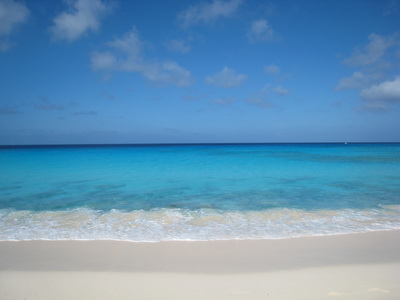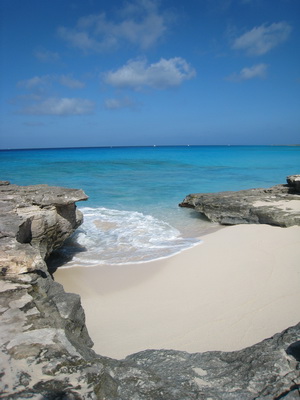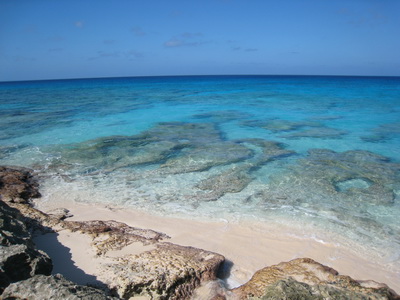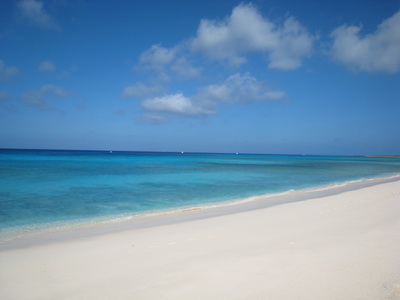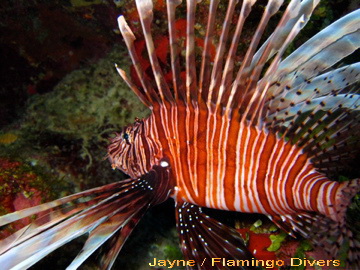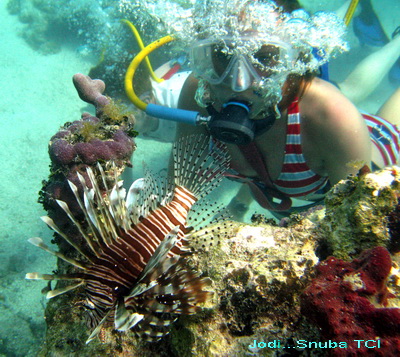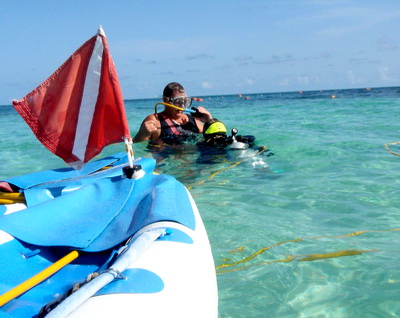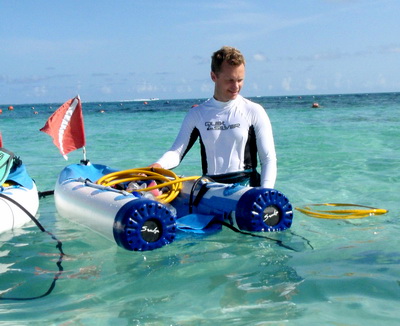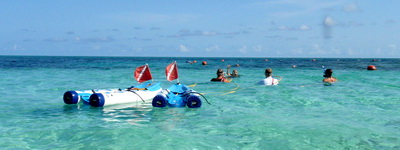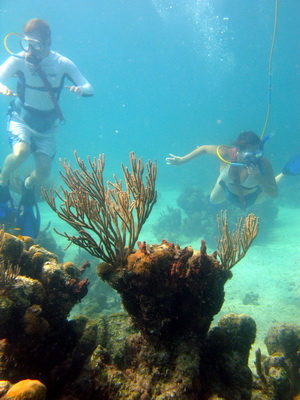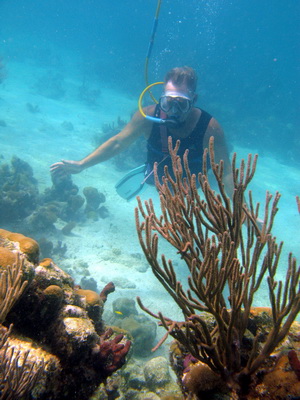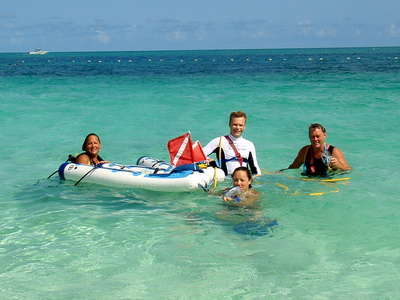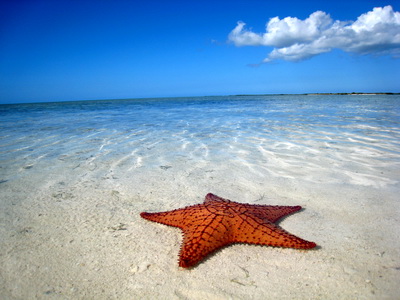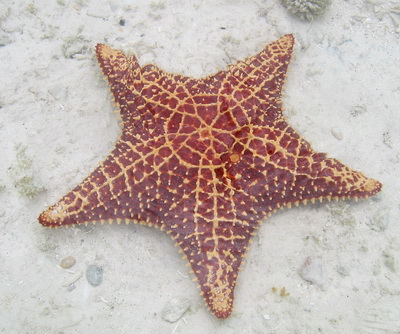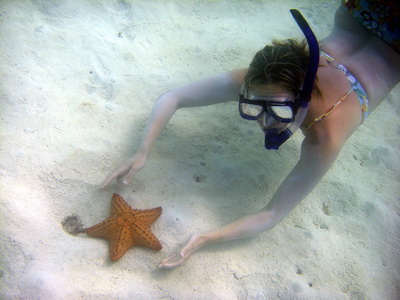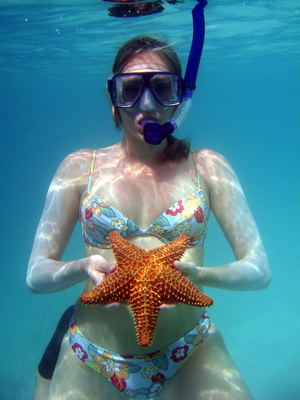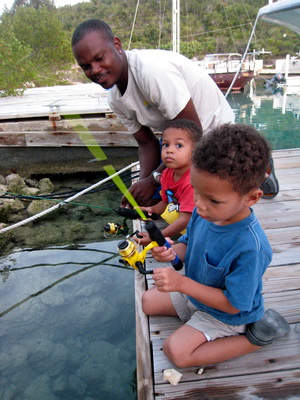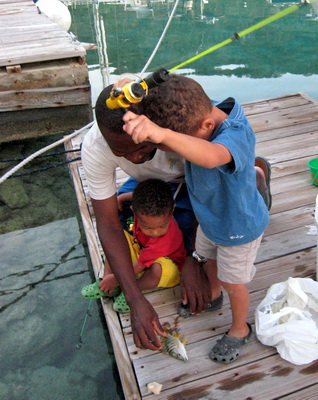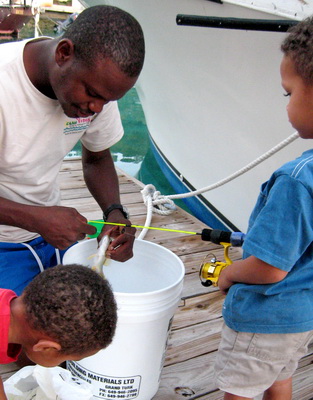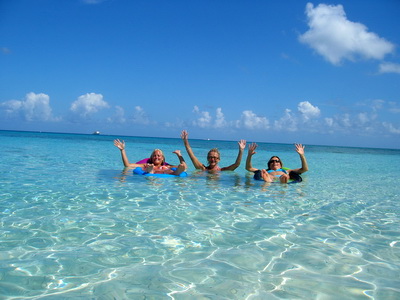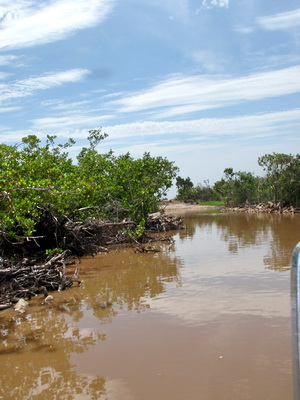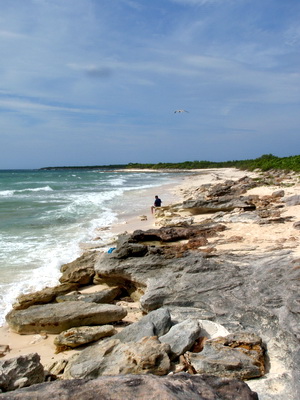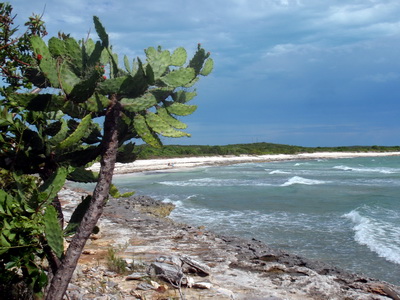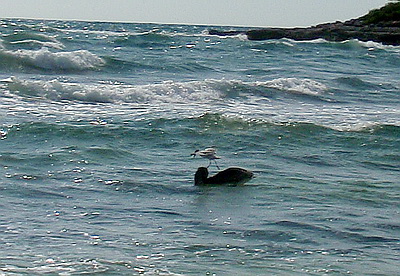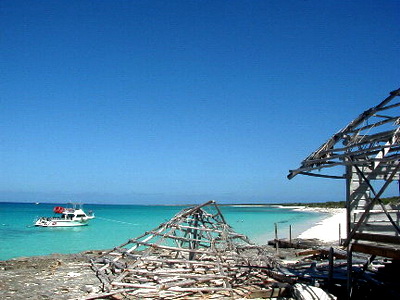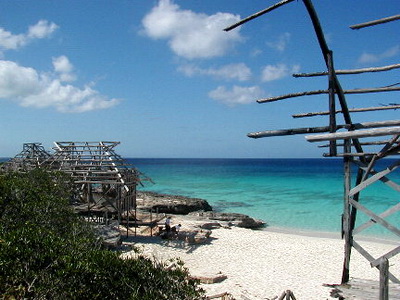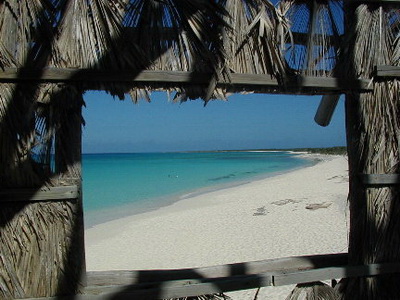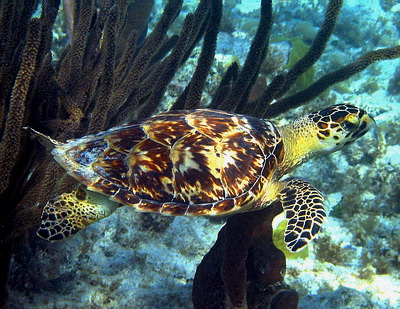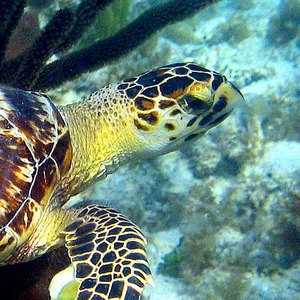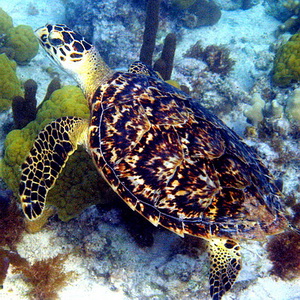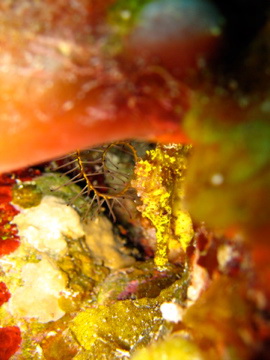
Jayne of Flamingo Divers snapped this photo of a small seahorse while diving on Saturday
Our guests at Harbour Club Villas have been out diving with Mickey and Jayne of Flamingo Divers for the past three days. What a highlight when Jayne discovered this little seahorse which was tucked away and very well hidden. It is a rare occurance to be the first to discover a new seahorse on a dive site. The dive operators here share this information with each other so they can point out the seahorse to their divers.
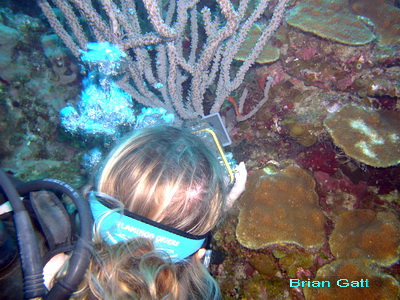
Another guest of ours Brian Gatt snapped this photo of Jayne taking a photo of another seahorse (see the orange tail ) they came across last year
On Saturday, Aug 1, Flamingo Divers were out at the dive sites of the North West Point and these creatures are quite rare and so very beautiful.
Seahorses are so named because they have a horse shaped head and a body and tail which is covered with concentric boney rings.
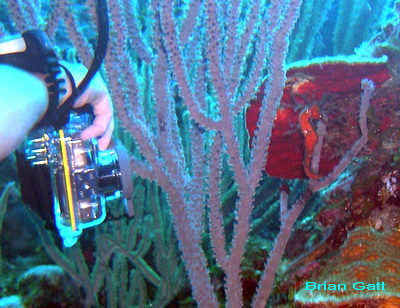
Brian got a great photo of Jayne's camera shooting the little seahorse
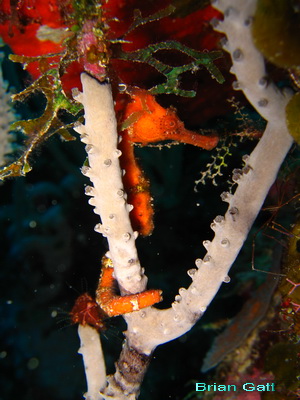
Brian's unbelieveably great photo of a seahorse
Seahorses vary in colour including orange, red, yellows, grey and greens and they change colours to blend in with their surroundings. They are not good swimmers and are most likely to be seen resting in sea grass beds or coral reefs with their prehensile tail wrapped around something that is stationary.
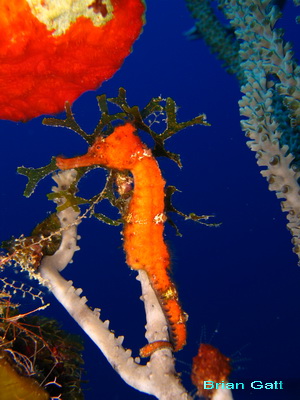
Seahorses vary in size from 1 1/2 to 12 inches long and don't generally travel long distances
Seahorses only have one mate and it is the male that gives birth to its live young. The female seahorse lays eggs directly into the male’s pouch on his abdomen where he immediately fertilizes them as they are deposited. One or two months later he gives birth to tiny replicas of the adults.
We hope you are lucky enough to see one of these rare creatures when out diving in the clear waters and on our coral reefs in the Turks and Caicos Islands. If you are looking for some great diving, give Flamingo Divers a call………Mickey and Jayne are the best and give an exceptionally personalized service to all who dive with them.
See you under the water as you dive and explore our reefs.
Marta
http://www.diving.tc

